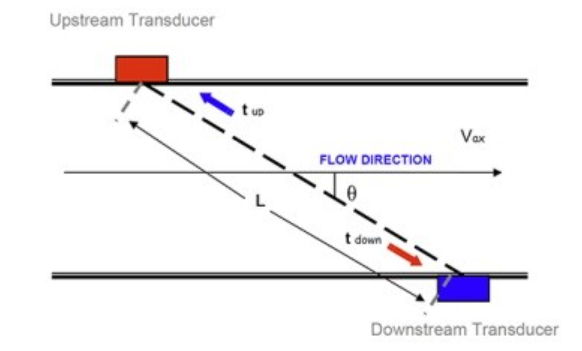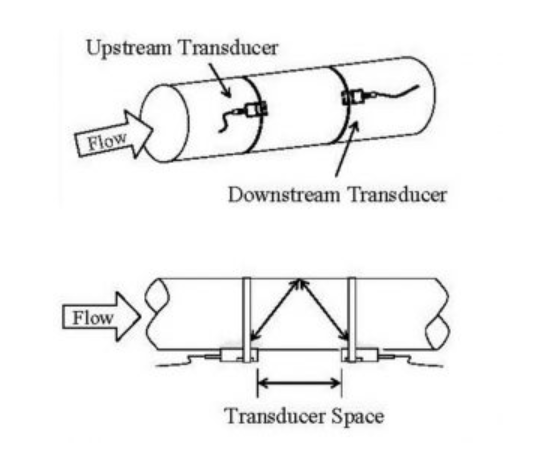Ultrasonic Magnetic Vortex Flow Meter Manufacturer, Sure We Are, Sure To Be Better | ✉ overseas@suremeter.com
Ultrasonic Magnetic Vortex Flow Meter Manufacturer, Sure We Are, Sure To Be Better | ✉ overseas@suremeter.com
An ultrasonic flow meter utilizes ultrasound to measure the velocity of a fluid and is used in a variety of fluid applications. Ultrasonic flowmeters are ideal for water and other liquids. Clamp-on ultrasonic flow meters achieve high accuracy at low and high flows, save time with no pipe cutting or process shutdown, and are not affected by external noise.
Here’s how ultrasonic flow meters work.
Ultrasonic flow meters use sound waves at a frequency beyond the range of hearing (typically 0.5, 1, or 4 MHz). This ultrasound signal is sent into a stream of flowing liquid by using wetted (insertion) transducers that make direct contact with the liquid or external (clamp-on) transducers that send the ultrasound through the pipe wall. Clamp-on ultrasonic flow meters allow users to measure the volumetric flow rate of a fluid in a pipe without having to penetrate the pipe which decreases installation and maintenance costs.
A typical transit-time ultrasonic liquid flow meter utilizes two ultrasonic transducers that function as both ultrasonic transmitter and receiver. The ultrasonic flow meter operates by alternately transmitting and receiving a burst of ultrasound between the two transducers by measuring the transit time that it takes for sound to travel between the two transducers in both directions. The difference in the transit time (∆ time) measured is directly proportional to the velocity of the liquid in the pipe.

Below is a drawing of a typical application using the most common, V (2 pass) mounting method with clamp-on transducers. In this application, the ultrasound is transmitted from the first transducer and travels through the pipe wall, through the liquid, then reflects off the back wall of the pipe, then travels through the pipe wall, and is picked up by the second transducer.
The same process is then repeated in reverse as the second transducer transmits the ultrasound. The time difference between the times of flight up and down is the ∆ Time. When the liquid in the pipe is not moving, the ∆ Time would be zero.

To calculate the velocity of the liquid, you need to convert the raw ∆ Time into the velocity of the liquid in the pipe. The angle of the ultrasound path is calculated by knowing the speed of sound of the pipe and the liquid. This angle is used in a common trigonometry equation to convert the ultrasound path into a straight line in the pipe. This will be the velocity of the liquid in the pipe.
Once the velocity is known, it’s just a matter of converting it into a flow rate by multiplying it times the cross-sectional area of the pipe, as with any velocity based flow meter.
Copyright © 2025 Tianjin Sure Instrument Co., Ltd. | All Rights Reserved 津ICP备08002549号-2
Hello, please leave your name and email here before chat online so that we won't miss your message and contact you smoothly.